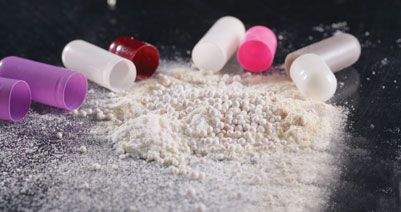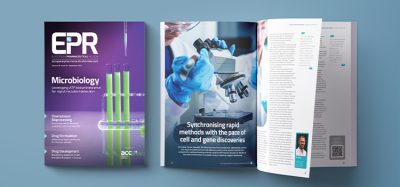Excipients in medicines for children: scientific and regulatory paradigms
Posted: 15 April 2014 | | No comments yet
There is an ongoing debate over the use of pharmaceutical excipients in medicines for children, triggered by the increased number of formulations suitable for this target patient population. Pharmaceutical excipients can be regarded as essential / necessary enablers in formulation development. These are materials other than the ‘active pharmaceutical ingredient’ which are added to the formulation to achieve a specific function1.


This may include aiding in the processing or manufacture of the drug delivery system such as lubricants or flow aids, controlling the release of the active ingredient to achieve modified release, enhance patient acceptability by improving taste of medicines or to develop easily swallowed dosage forms.
Bearing in mind the current regulatory framework for excipient development and approval, it is becoming increasingly challenging to introduce new excipients to the market. This comes in an era when there is a real need for research on excipients that facilitate the formulation development of novel drug delivery systems, or formulations with a focus on personalised treatments for specific patient populations2.
Consequently, a combination of technical, safety and regulatory challenges for the use of excipients in paediatric preparations should be investigated and addressed.
Technical considerations for excipient development in paediatric formulations
Excipients are subdivided into multiple functional classes dependant on their composition and the role they undertake in the final dosage form3. The new excipients developed for paediatric formulations sometimes belong to more than one functional group (multifunctional) and hence, pose additional burden on the manufacturer to demonstrate their precise role during regulatory submissions.
There has been a considerable amount of mixed or co-processed excipients (not new chemical entities) introduced to the market for the development of fast disintegrating or dissolving dosage forms for children. Some examples of these are Ludiflash, Pharmaburst and F-Melt, which are usually a mixture of two or more excipients with contrasting functionalities to achieve desirable ready-to-use excipient blends4. These products could simplify the formulation development process and reduce the associated technical challenges as the mixtures contain optimised amounts of diluent, disintegrant and binder. This in turn can provide the desirable target product profile of the orally disintegrating tablet (ODT) or the child-friendly dosage form.
Essentially, most of the ready-to-use excipients contain at least one polyol (sugar alcohol) such as mannitol or sorbitol alongside excipients which enhance swelling and disintegration of the tablet in few seconds5. Other additional materials may include flavours or colourants to enhance the aesthetic properties of the dosage form.
Accordingly, some of these excipients require further characterisation of their composition to fully understand the functionality and physico-chemical / mechanical properties to support quality by design (QbD) to formulation development6,7. It is also critical that analytical testing of co-processed excipients is performed to confirm no chemical change during processing2.
Research groups have already started compiling information on excipient functionality in an electronic database7. In our laboratory, functionality of excipients used in solid dosage forms for children were studied using novel methodologies that enhance our understanding of the composition of excipients on the nano and micro-scale. In addition, excipient-excipient and excipient-drug interactions were studied on the nano-scale to unveil scientific information on materials behaviour in the solid state to reduce the risk of interactions during downstream operations. Mannitol and MCC were some of the excipients investigated to elucidate the pros and cons of their use in children solid formulations.
In liquid oral formulation, the use of excipients including propylene glycol, benzyl alcohol, surfactants and ethanol is undesirable for children of certain ages due to inherent toxicities and incomplete maturation of metabolic function especially in neonates9. Nevertheless, the substitute for these excipients is still largely missing and manufacturers are experiencing difficulties with finding appropriate paediatric excipients.
Despite that, research into novel excipients derived from natural chemical entities continued to overcome some of the solubility and palatability issues of medicines for children. There is a growing trend for the use of cyclodextrins as excipients for the delivery of poorly soluble drugs and for taste masking of paediatric oral liquid formulations9. Cyclodextrins are ‘cup shaped’ molecules (Figure 1) composed of cyclic oligosaccharides that were discovered in bacterial digest isolated from starch in 189110.
The cup shaped molecule inner cavity is hydrophobic while the outer surface is hydrophilic, hence poorly soluble or unpalatable drugs can be included inside the cup to prevent immiscibility or contact with the outside aqueous environment. In one study, midazolam, a preoperative anaesthetic commonly given to children, was successfully incorporated into γ-CD in order to mask its bitter acidic taste11.
Parenteral products also contain excipients such as solubilisers, buffering agents, stabilisers and preservatives. These excipients present technical challenges such as the need for sterility besides the ability to withstand terminal sterilisation of aseptic processing. This in turn limits the choice of available excipients12.
While the technical challenges in excipient research and development for paediatric formulations continue to appear especially with the future development of more complex entities from biotechnological sources6, nevertheless, important questions have to be raised questioning the safety of these novel and multifunctional excipients – is there enough data to justify their use and will there be methods to predict their toxicological profile in paediatrics?
Perspectives on excipient use in children and associated regulations
A major hurdle in paediatric formulation development is the lack of safety and toxicity data on some of the commonly used excipients. The first documented major case of excipient toxicity was in children. In 1937, 107 people died, which included a large group of children due to the untested use of diethylene glycol (DEG) in an elixir of Sulfanilamide (Figure 2)13. Consequently in 1938, the Food, Drug and Cosmetic Act (FD&C Act) was passed in the United States to place safety burden on the drug manufacturers.
The previous example of cyclodextrins holds a potential for use in paediatric formulations because of their low toxicity profile. They tend to exhibit good oral safety profiles as the intestinal absorption is less than 0.5 per cent14. This may result from the hydrophilic outer surface of the oligosaccharide limiting the absorption of intact Cyclodextrins14,15. The use in children formulations was also demonstrated by a study of Cyclodextrin Itraconazole in 26 HIV-infected children (age 5 – 18 years old) with oropharyngeal candidiasis (OPC). The study showed that the combination CD-ITRA was well tolerated and efficacious for the treatment of OPC in children ≥ 5 years old16. On the other hand, the use of Beta-Cyclodextrin in parenteral formulations is inappropriate as it leads to necrosis of the proximal kidney tubules when administered via intravenous or subcutaneous routes12. This signifies the dependence of excipient toxicity on the particular route of administration which is of prime importance.
Unlike the above example, many excipients have no available safety data to support their use in children and usually an assessment of the risk / benefit obtained from using a specific excipient is applied to justify their use during regulatory approval.
While the maximum oral safe dose of mannitol is known in adults (20 grams / day) which if exceeded will have a laxative effect17, the dose in children is not established yet due to the lack of evidence-based data. However, it is a fact that mannitol is poorly absorbed by the GI tract18 which enhances its safety when taken orally.
In addition, medicines containing mannitol or other polyols such as maltitol, sorbitol or xylitol are regarded as ‘Sugar Free’ due to their extremely low caloric content. Hence, according to the British National Formulary for children (BNFC), it is advisable to use ‘Sugar Free’ preparations whenever possible to reduce the development of dental carries especially during chronic treatment19.
Other diluents such as lactose were reported to cause issues in children with severe lactose intolerance including diarrhoea, dehydration and metabolic acidosis. Moreover, BNF for children states that “The lactose content in most medicines is too small to cause problems in most lactose-intolerant children, However in severe lactose intolerance, the lactose content should be determined before prescribing19.”
Some enteric coating polymers used to protect acid-labile medicines were reported (methacrylic acid copolymer Eudragit L30 D-55) to cause fibrosing colonopathy in children treated with high strength pancreatic enzyme formulation. Despite that, the conclusions were not firmly established and various researchers posted conflicting reports to support or oppose the association between the coating polymer and the fibrosis20,21.
Likewise, the use of parabens (propyl and methyl) as preservatives in formulations for children has been debated; the negative impact on sperm counts discussed by Oishi and conducted in a juvenile rat model could not be replicated in a recent toxicological study in juvenile rats of the same age22-24. However, according to the European Medicines Agency (EMA), the use of preservatives should be avoided particularly in the case of paediatric formulations and where appropriate the concentration should be at the lowest feasible level24.
The EMA reflection paper25 on paediatric formulations states that “Products containing high levels of propylene glycol should not be administered to paediatric patients below the age of four years” which indicates that the excipient still retains a feasible use in paediatric patients of school age and adolescents. In neonates, it was reported that propylene glycol half-life is more than three times that in adults; hence it is a toxicity concern in this age group.
The conflicting nature of the reports mentioned above possibly reflects the variations in the procedures used to assess the toxicology and safety profiles of excipients in children. Furthermore, it indicates the lack of solid evidence to support decisions for use / avoidance of excipients in children formulations.
Our perspective
It is suggested that systematic reviews for adverse reactions caused by excipients of concern to be conducted, in a similar way to what has been done to APIs with conflicting reports of adverse events, to reach to a conclusive evidence-based use in children. It is also important to emphasise that toxicity issues are mostly prominent in neonates due to incomplete maturation of metabolic functions / physiological barriers.
The innovation in excipients research has been struggling as a result of the gap in toxicity / safety data of materials in the paediatric population and because of the consequent regulatory obstacles. Regardless, some excipient manufacturers have shown willingness to fund toxicology studies for novel excipients to facilitate future drug development.
Given that new excipients use is only allowed as part of a new approved drug product, it is imperative that risk assessment is carried out on new excipients following the right regulatory procedure that ensures patient safety. Accordingly, efforts have been made both in America and Europe to establish an excipient safety database (STEP database) to facilitate excipients use in paediatric medicines.
References
- Pifferi G, Restani P. The Safety of Pharmaceutical Excipients. II Farmaco 58, 541-550 (2003)
- Osterberg RE, Demerlis CC, Hobson DW, McGovern TJ. Trends in Excipient Safety Evaluation. International Journal of Toxicology 30, 600-610 (2011)
- United States Pharmacopeial Convention. USP and NF Excipients, Listed by Category. USP 35-NF 30 USP, Rockville, MD, USA, 2011, p. 4
- Brniak W, Jachowicz R, Krupa A, Skorka T, Niwinski K. Evaluation of Co-processed Excipients Used for Direct Compression of Orally Disintegrating Tablets (ODT) Using Novel Disintegration Apparatus. Pharmaceutical Development and Technology 18, 464-474 (2013)
- Al-Khattawi, A & Mohammed, AR. Compressed Orally Disintegrating Tablets: Excipients Evolution and Formulation Strategies. Expert Opinion on Drug Delivery 10, 651-663 (2013)
- International Pharmaceutical Excipients Council. The IPEC Excipient Composition Guide (2009)
- Wang T. et al. The Creation of an Excipient Properties Database to Support Quality by Design (QbD) Formulation Development. American Pharmaceutical Review
- http://www.americanpharmaceuticalreview.com/Featured-Articles/140508-The-Creation-of-an-Excipient-Properties-Database-to-Support-Quality-by-Design-QbD-Formulation-Development/> Accessed online (20/Dec/2013)
- Allegaert K. Propylene Glycol in Neonates: Never Prescribed, Frequently Administered, Hardly Evaluated. Journal of Clinical Toxicology 2 (2012) doi: http://dx.doi.org/10.4172/2161-0495.1000e113
- Shabir A & Mohammed AR. Exploring the Use of Cyclodextrins as Carriers in Paediatric Formulations. The British Journal of Clinical Pharmacy 2, 275-278 (2010)
- Brewster ME & Loftsson T. Cyclodextrins as Pharmaceutical Solubilisers. Advanced Drug Delivery Reviews 59, 645–666 (2007)
- Marçon F et al. Development and Formulation of a 0.2% Oral Solution of Midazolam Containing γ-Cyclodextrin. International Journal of Pharmaceutics 379, 244-250 (2009)
- Pramanick S, Singodia D, Chandel V. Excipient Selection in Parenteral Formulation Development. Pharma Times 45, 65-77 (2013)
- Food and Drug Administration. This Week in FDA History – Nov. 16, 1937. FDA Website < http://www.fda.gov/aboutfda/whatwedo/history/thisweek/ucm117880.htm> accessed online (22/Dec/2013)
- Kaukonen AM, Kilpaläinen I, Mannermaa J-P.Water Soluble β-Cyclodextrins in Paediatric Oral Solutions of Spironolactone: Solubilization and Stability of Spironolactone in Solutionof β-Cyclodextrins Derivatives. International Journal of Pharmaceutics 159, 159-170 (1997)
- Thompson DO. Cyclodextrins – Enabling Excipients: Their Present and Future Use in Pharmaceuticals. Critical Reviews in Therapeutic Drug Carrier Systems 14, 1-104 (1997)
- Groll AH et al. Safety, Pharmacokinetics, and Pharmacodynamics of Cyclodextrin Itraconazole in Pediatric Patients with Oropharyngeal Candidiasis 46, 2554-2563 (2002)
- Rowe RC, Sheskey PJ, Cook WG, Fenton ME. Handbook of Pharmaceutical Excipients. Seventh Edition (2012)
- Katzung B, Masters S, Trevor A. Basic and Clinical Pharmacology. Eleventh Edition (2011).
- Paediatric Formulary Committee. British National Formulary for Children (BNFC): General Guidance: Excipients. 2013-2014 Edition. July 2013
- Ramsden WH, Moya EF, Littlewood JM. Colonic wall thickness, pancreatic enzyme dose and type of preparation in cystic fibrosis. Archives of Disease in Childhood 79, 339-343 (1998)
- Dodge JA. Colonic wall thickness and pancreatic enzymes in cystic fibrosis. Archives of Disease in Childhood 81, 96-99 (1999)
- Oishi S. Effects of Propyl Paraben on the Male Reproductive System. Food and Chemical Toxicology 40, 1807-1813 (2002)
- Oishi S. Lack of Spermatotoxic Effects of Methyl and Ethyl Esters of P-hydroxybenzoic Acid in Rats. Food and Chemical Toxicology 42, 1845-1849 (2004)
- EMA Committee for Medicinal Products for Human Use (CHMP). Reflection Paper on the Use of Methyl and Propylparaben as Excipients in Human Medicinal Products for Oral Use. EMA/CHMP/SWP/272921/2012 (2012)
- EMA Committee for Medicinal Products for Human Use (CHMP). Reflection Paper: Formulations of Choice for the Paediatric Population. EMA/CHMP/PEG/194810/2005 (2006)
Biography
Ali Al-khattawi is a postdoctoral research associate at Aston University in the UK. He carried out his PhD in drug delivery at Aston University and MSc in pharmaceutical sciences with distinction at Kingston University. Ali’s research interests include the development of age-appropriate formulations for children and elderly patients and research on excipient/material functionality assessment.
Afzal R. Mohammed is a Senior Lecturer in Pharmaceutics at Aston University. His research is focused on studying various dimensions associated with paediatric formulation development and delivery. His research encompasses material processing and characterisation to formulate orally disintegrating tablets, taste masking and taste assessment.
[email protected]









